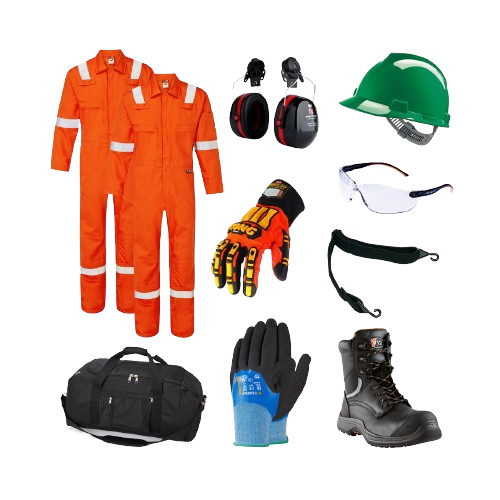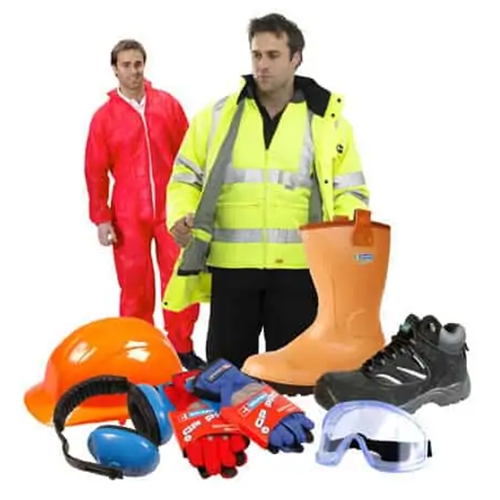Description
A comprehensive PPE set typically includes the following items:
1. Head Protection:
- Hard Hat/Helmet: Protects against falling objects, electrical hazards, and impacts to the head.
- Bump Cap: For lighter protection against minor bumps and scrapes.
2. Eye and Face Protection:
- Safety Glasses: Shields eyes from dust, debris, and harmful chemicals.
- Goggles: Offers a snug fit to protect against liquids and dust particles.
- Face Shield: Protects the face from splashes, flying debris, or potential radiation exposure (e.g., welding or electrical work).
3. Hearing Protection:
- Earplugs: Inserted into the ear to block loud noises and protect hearing.
- Earmuffs: Over-ear protection for high-noise environments.
4. Respiratory Protection:
- Dust Mask: Protects against inhaling dust, particles, and allergens.
- Respirators (N95, Full-Face): Provides protection against harmful airborne particles, gases, and fumes.
5. Hand Protection:
- Work Gloves: Essential for handling rough, sharp, or hot materials, preventing cuts, burns, and abrasions.
- Cut-Resistant Gloves: For handling sharp objects or tools.
- Chemical-Resistant Gloves: For working with hazardous chemicals or substances.
6. Body Protection:
- Coveralls: Full-body protection against dirt, chemicals, and other hazards.
- Hi-Visibility Vest: Ensures workers are visible, especially in low-light or high-traffic areas.
- Flame-Resistant Clothing: Protective gear to minimize the risk of burns in high-heat environments.
7. Foot Protection:
- Safety Boots: Steel-toed or composite boots protect against impacts, compression, and punctures.
- Slip-Resistant Shoes: For environments where slipping is a concern.
- Chemical-Resistant Boots: To protect from hazardous chemicals in industrial environments.
8. Fall Protection:
- Harnesses: Used in elevated workspaces to prevent falls.
- Lanyards: Connected to secure points to prevent workers from falling.
- Safety Nets: Placed below elevated workspaces for added fall protection.
9. Hand and Arm Protection:
- Arm Sleeves: Protects against scratches and burns.
- Elbow and Knee Pads: For protection in tasks that involve kneeling or crawling.
10. Other PPE Items:
- Face Masks: For protection from dust, bacteria, and viruses.
- Eye Wash Station and First Aid Kit: Emergency items that are essential in the event of exposure to harmful substances.
Choosing the Right PPE:
- Work Environment: The type of work and environment should dictate the PPE selection. For example, chemical handling requires chemical-resistant gloves and clothing.
- Standards and Regulations: Ensure PPE meets industry standards and local safety regulations, such as OSHA (Occupational Safety and Health Administration) or EN (European Norm) standards.
- Comfort and Fit: The PPE should be comfortable and properly fitted to ensure effectiveness in providing protection.
Incorporating a PPE set into workplace safety protocols helps protect workers from potential hazards, reducing the risk of injury and ensuring compliance with safety regulations.










